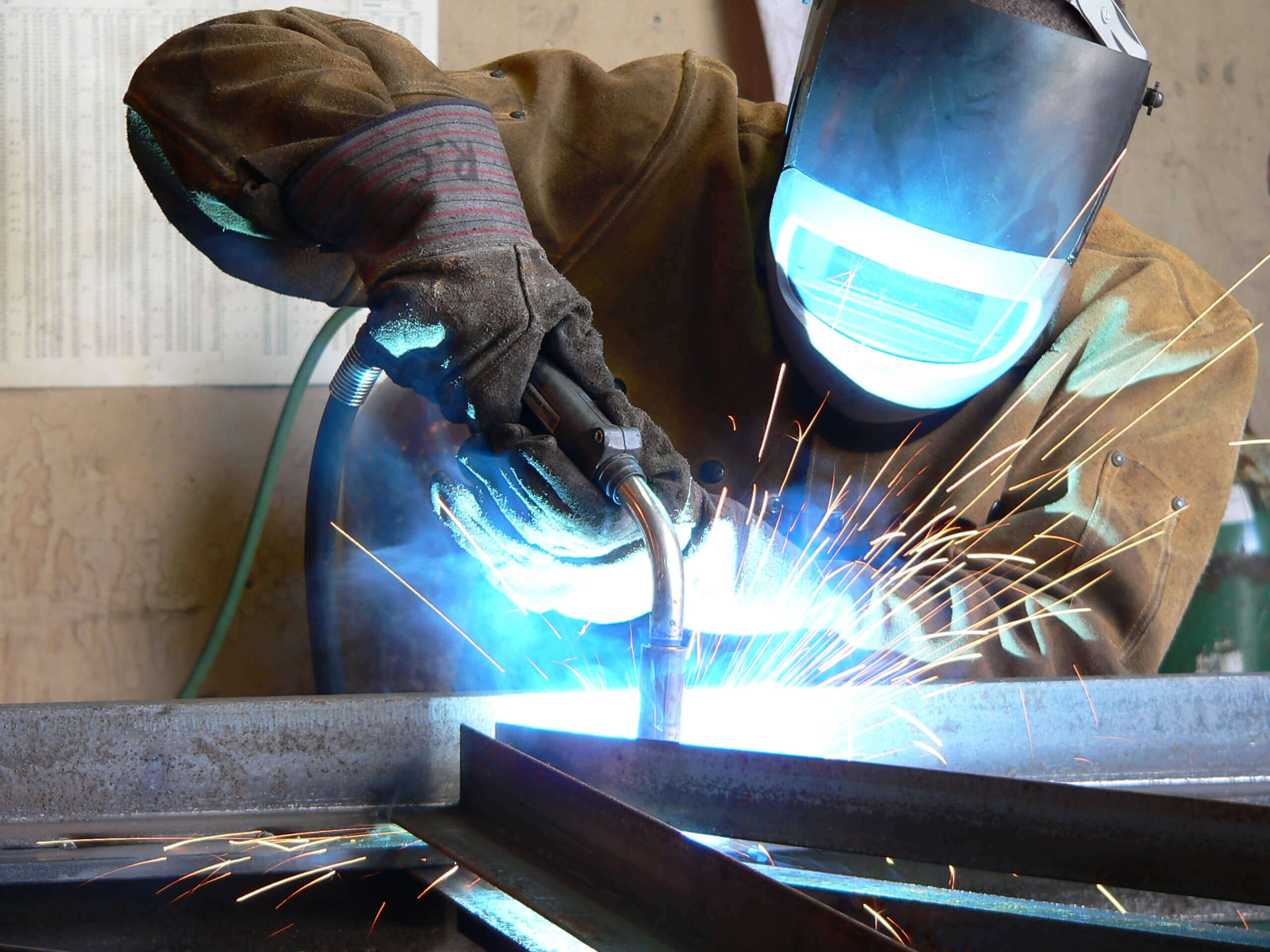Still MIG welding with Argon….?


Argon has been the popular choice of welding gas for a long time. It is highly versatile, and is relatively cost-effective. But argon’s versatility is a double-edged sword, leading many welders to use argon despite the fact there are much higher performing welding gas options for each of their specific applications. The result can be non-optimised weld quality, lower productivity, and potentially, higher costs.
To understand the situation with pure argon as a welding gas, we need to get back to basics. One of the most common arc welding processes – MIG or metal inert gas– uses a consumable which is continuously fed through the torch where it picks up current from the contact tip. At its end, an arc is struck that melts the wire consumable and transfers droplets to the workpiece forming a weld pool. Allowing oxygen, nitrogen, or other contaminants into the weld pool can greatly affect the quality of the resulting weld. To protect against this, a stream of inert gas (the “IG” in MIG) is passed over the arc and weld pool to exclude any contaminants from the atmosphere.
Argon is a relatively inexpensive inert gas. This makes it a prime candidate for MIG welding processes. As a result, pure argon finds its way into the arsenal of many welders as it can be used for many different applications.
However, just because pure argon can be used for many different welding applications doesn’t necessarily mean it is the best solution. As an inert gas, argon meets the basic requirement for MIG welding i.e. as a protective shield over the weld pool. While argon will likely produce a satisfactory weld, it does not bring any other benefits to either the weld or welding operation to optimise quality and efficiency.
The effectiveness of argon as a welding gas can be greatly improved upon by the addition of other gases such as oxygen (O2), helium (He), and hydrogen (H2).
For example, the addition of a small percentage of helium and carbon dioxide in argon can hugely improve weld penetration when welding 300 series stainless steels. The presence of these additional gases in Inomaxx® Plus gas increases welding speeds by up to 17 percent and produces a stronger, flatter, cleaner weld. Technically, the addition of carbon dioxide – a non-inert gas – changes the process from MIG (metal inert gas) to MAG (metal active gas), albeit the equipment and process remain fundamentally the same.
Similarly, the addition of helium into argon has significant benefits when welding aluminium and aluminium alloys, producing a higher quality weld more efficiently and cost-effectively. Aluminium can be challenging to weld, yet the mixture of argon and helium reduces the potential for defects (porosity, shrinkage, distortion), allows faster travel speeds, requires lower heat input with less energy, wire and gas consumed. In addition, from a safety perspective, mix gases can help to reduce harmful substances. Air Products’ Alumaxx® Plus gas reduces ozone generation by 55 precent compared to pure argon.
Tailored to specific application areas, argon-based gas mixes can offer vastly superior results to pure argon for MIG welding in terms of weldability, through stabilising the arc and assisting in the metal transfer/wire droplet transfer, as well as weld quality.
Air Products supplies a variety of Maxx® weld process gas mixes to get the best results for different applications, including Inomaxx® for MIG welding stainless steel and Alumaxx® Plus for MIG welding aluminium.
Are you MIG welding with argon? Want to find out which welding gas is best suited to your applications?
Air Products works closely with the metal fabrication industry to provide an expansive range of high-quality process gases for all potential welding applications. Our experienced welding application specialists can advise on any aspect of your welding operation and make sure that you’re using the optimum gas mix for quality and efficiency.
To find out more information, download our free Welder’s Handbook or get in touch with us via our website.

An industry leading comprehensive guide to gas shielded arc welding and oxy-fuel cutting.